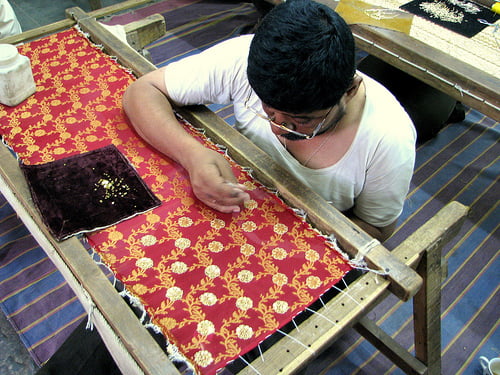We know plenty about Lady Curzon and the Delhi Durbar and we can still admire the original dress, but how was this extraordinary garment made?
Examination of the original Peacock Dress and similar unfinished works reveals that rectangular pieces of the base material were stretched on a frame in order for the pieces of the dress to be marked out and embroidered. The embroidery was completed by a team of Indian zardosi craftsmen at Kishan Chand in Delhi, using skills passed down through generations and still practised today.
When complete, these embroidered pieces were shipped to Paris, a voyage of a few weeks, where they were cut out and assembled at the House of Worth to form the dress. The December 1902 serial number on the waistband of the dress indicates that the completed gown was only barely finished in time to be shipped back to India for the ball on January 6th, 1903.
The dress was undoubtedly made according to an existing pattern that Worth had previously made for Lady Curzon, since she was a regular client. Her Oak Leaf embroidered state gown of the same year, which is stored at the Bath Fashion Museum, UK, appears to be of a very similar construction. However, my research on both dresses indicates that the skirt pattern for the Peacock dress was made deliberately bigger than necessary, allowing some room for error in this transatlantic collaboration, and was then pleated to fit.

